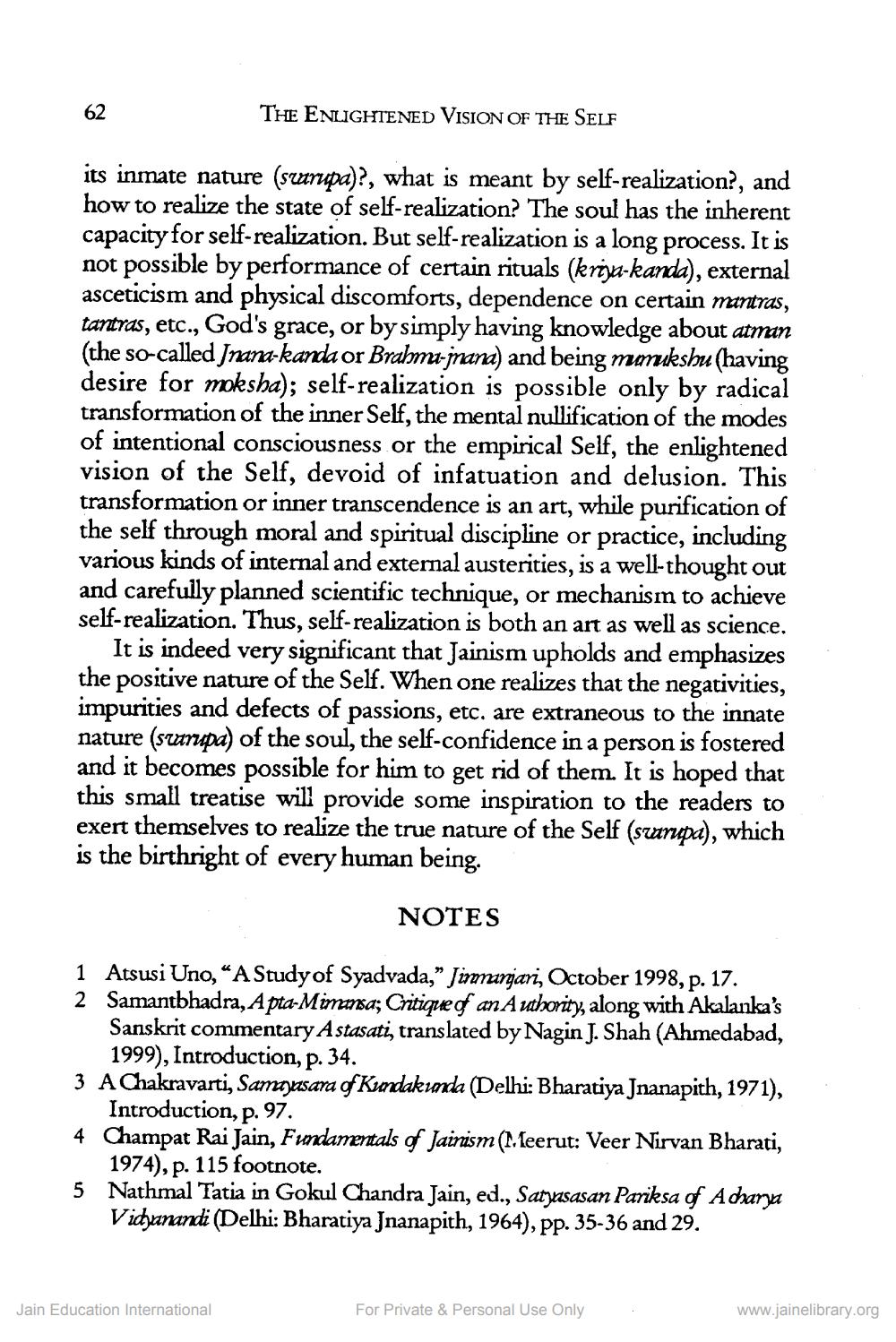________________
62
THE ENLIGHTENED VISION OF THE SELF
its inmate nature (starupa)?, what is meant by self-realization?, and how to realize the state of self-realization? The soul has the inherent capacity for self-realization. But self-realization is a long process. It is not possible by performance of certain rituals (kriya-kanda), external asceticism and physical discomforts, dependence on certain mantras, tantras, etc., God's grace, or by simply having knowledge about atman (the so-called Jnana-kanda or Brahma-jnana) and being mumukshu (having desire for moksha); self-realization is possible only by radical transformation of the inner Self, the mental nullification of the modes of intentional consciousness or the empirical Self, the enlightened vision of the Self, devoid of infatuation and delusion. This transformation or inner transcendence is an art, while purification of the self through moral and spiritual discipline or practice, including various kinds of internal and external austerities, is a well-thought out and carefully planned scientific technique, or mechanism to achieve self-realization. Thus, self-realization is both an art as well as science.
It is indeed very significant that Jainism upholds and emphasizes the positive nature of the Self. When one realizes that the negativities, impurities and defects of passions, etc. are extraneous to the innate nature (starupa) of the soul, the self-confidence in a person is fostered and it becomes possible for him to get rid of them. It is hoped that this small treatise will provide some inspiration to the readers to exert themselves to realize the true nature of the Self (szarupa), which is the birthright of every human being.
NOTES
1 Atsusi Uno, "A Study of Syadvada," Jinmanjari, October 1998, p. 17. 2 Samantbhadra, Apta-Mimansa; Critique of an Authority, along with Akalanka's Sanskrit commentary Astasati, translated by Nagin J. Shah (Ahmedabad, 1999), Introduction, p. 34.
3 A Chakravarti, Samayasara of Kundakunda (Delhi: Bharatiya Jnanapith, 1971), Introduction, p. 97.
4 Champat Rai Jain, Fundamentals of Jainism (1.leerut: Veer Nirvan Bharati, 1974), p. 115 footnote.
5 Nathmal Tatia in Gokul Chandra Jain, ed., Satyasasan Pariksa of Acharya Vidyanandi (Delhi: Bharatiya Jnanapith, 1964), pp. 35-36 and 29.
Jain Education International
For Private & Personal Use Only
www.jainelibrary.org




